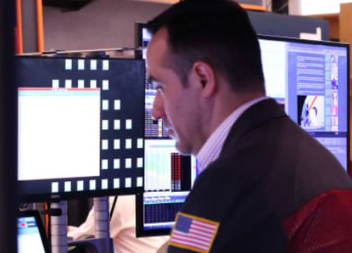Biden has not only created an atmosphere for war on a global scale, but he and the Democrats’ actions have done such damage to the U.S. economy that we expect the worst. Especially considering how they are playing Soviet games, in changing definitions to hide the fact that we are in a recession to begin with.
Wall Street’s fear gauge spiked early Monday to the highest level in more than four years amid a global market meltdown. The Cboe Volatility Index, or VIX, helps measure the level of fear among investors. It jumped as much as 172% to 62.27 before trading opened Monday. That marks the highest level for the index since March 2020, at the onset of the COVID-19 pandemic, when the gauge rose as high as 85.47.
U.S. stocks fell sharply on Monday as part of a global market sell-off centered around U.S. recession fears. Japan’s Nikkei 225 plunged 12% in its worst day since the 1987 Black Monday crash for Wall Street.
https://t.co/Kb1HOInK9Y— Baton Moyiz (@moisegarcon) August 5, 2024
The VIX index is based on the price of S&P 500 stock options and is used to measure expected volatility. Since the start of the pandemic, the VIX index has been relatively stable, never closing above 40. But it started to surge last week after the weaker-than-expected July jobs report reignited fears of a recession.
The Labor Department reported the economy added just 114,000 workers last month, while the unemployment rate jumped to 4.3%, the highest level since October 2021. The report added to mounting evidence that the economy is weakening in the face of high interest rates.
That’s because the rise in unemployment triggered the so-called Sahm Rule, an indicator that is used to provide an early recession signal. The rule stipulates that a recession is likely when the three-month moving average of the jobless rate is at least a half-percentage point higher than the 12-month low.
Over the past three months, the unemployment rate has averaged 4.13%, which is 0.63 percentage points higher than the 3.5% rate recorded in July 2023. The Sahm Rule has successfully predicted every recession since 1970.
Stocks crashed on Friday following the report, with the S&P 500 notching its worst day since October 2022. The indexes resumed their downward spiral in early trading Monday as the sell-off deepened. The Dow Jones Industrial Average tumbled more than 1,000 points, while the tech-heavy Nasdaq Composite slid 3.9%. The S&P 500 slid another 3%.
Wall Street analysts explaining Yen carry trade unwinding triggering a global market sell-off. pic.twitter.com/MUH50qLOz1
— Genevieve Roch-Decter, CFA (@GRDecter) August 5, 2024
“The U.S. is the locomotive of the global economic train and increasing concern about a slowdown, or possible recession, has markets around the world in turmoil,” said Greg McBride, chief financial analyst at Bankrate.
The slowdown in job growth also raises questions about whether the Federal Reserve waited too long to cut interest rates, which are currently hovering near a 23-year high. Policymakers voted to hold rates steady during their meeting last week, but they opened the door to a rate cut in September. More investors are now pricing in the likelihood of a bigger, 50-basis point reduction due to the sharp slowdown in job growth and the growing concerns of a recession.
Key Points:
i. VIX Index Surge: The Cboe Volatility Index (VIX), a measure of market fear, spiked to 62.27, its highest level since March 2020, reflecting heightened investor anxiety amid a global market meltdown.
ii. Weak Jobs Data: The weaker-than-expected July jobs report, which added only 114,000 jobs and saw the unemployment rate rise to 4.3%, triggered recession fears and contributed to the market volatility.
iii. Sahm Rule Indicator: The rise in unemployment activated the Sahm Rule, a reliable recession predictor, indicating the economy might be entering a recession due to the jobless rate increasing by over half a percentage point from its 12-month low.
iv. Market Reaction: Following the jobs report, major stock indexes plummeted, with the S&P 500, Dow Jones Industrial Average, and Nasdaq Composite experiencing significant declines as investors reacted to the economic data.
v. Federal Reserve Response: Concerns about a potential recession have raised questions about the Federal Reserve’s timing in cutting interest rates, with speculation of a significant rate reduction in September to address the economic slowdown.
Al Santana – Reprinted with permission of Whatfinger News



